![]() Our natural capital is the resources we draw from our natural environment to run our business and create the products and services we deliver to our stakeholders.
Our natural capital is the resources we draw from our natural environment to run our business and create the products and services we deliver to our stakeholders.
|
We understand that mining can result in long-lasting environmental impacts if unmanaged. Our strategy continues to guide our approach in managing our environmental impact; protecting the natural resources on which we rely. Our environmentally and socially responsible response to climate change supports South Africa's just transition programmes, and reflects our commitment to sustainability and our goal to be carbon neutral by 2050. We balance this with our role as a critical supplier to South Africa's coal-based electricity sector. Our natural capital impact encompasses air quality, climate change resilience, energy, water security, waste management, biodiversity, and environmental liabilities, land management and rehabilitation. |
We manage our impact by:
|
| Material theme | Matter | Our strategic response | Our impact on the SDGs |
 Adapting to a changing context Adapting to a changing context |
|
|
|
 Responsible environmental stewardship Responsible environmental stewardship |
|
||
 Principled governance Principled governance |
|
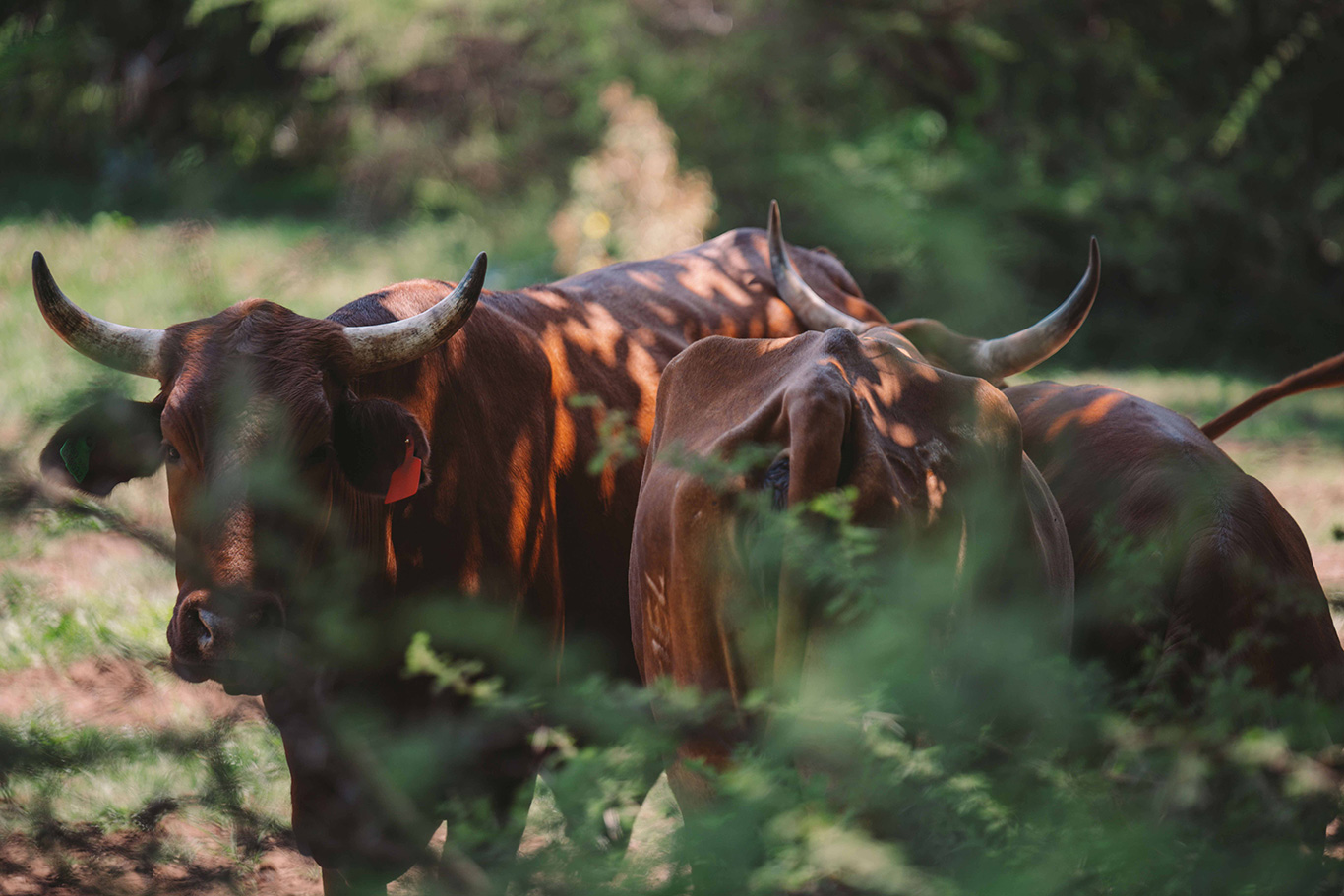
Exxaro's livestock grazing
Our environmental management programmes comply with applicable legislation, ensuring that all activities requiring licences are fully licensed, and our Sustainable Growth and Impact strategy guides the evolution of our environmental policy as we transition to a climate change-resilient portfolio. Management standards for air quality, water, energy, mine closure and rehabilitation as well as environmental incident management and reporting support our BUs in this transition, and embed climate change mitigation and adaptation. These standards are integrated into our environmental management activities, which are also ISO 14001-certified. Our STI scheme, aligned with our decarbonisation plan and Sustainable Growth and Impact strategy, motivates employees to uphold these standards.
The RBR committee oversees our environmental management and impact on behalf of the board. The executive head: sustainability is responsible for implementing environmental strategies for the group, assisted by sustainability and BU managers. The SERC ensures we align with just transition principles while the ESG steering committee's role is to support Exxaro's ongoing commitment to environmental, health and safety, corporate social responsibility, corporate governance, sustainability, and other relevant public policy matters.
Our environmental commitments fall under the following areas, each supported by specific strategies and policies:
|
Our mine plans consider land management, closure and concurrent rehabilitation with financial provision to ensure we honour our commitments. |
|
|
We manage and mitigate the negative impacts of air pollution, including dust and particulate matter, emanating from our mining activities. |
|
|
Our low-impact, high-value approach supports ecosystem health to protect indigenous flora and fauna at our operations. |
||
|
|
|
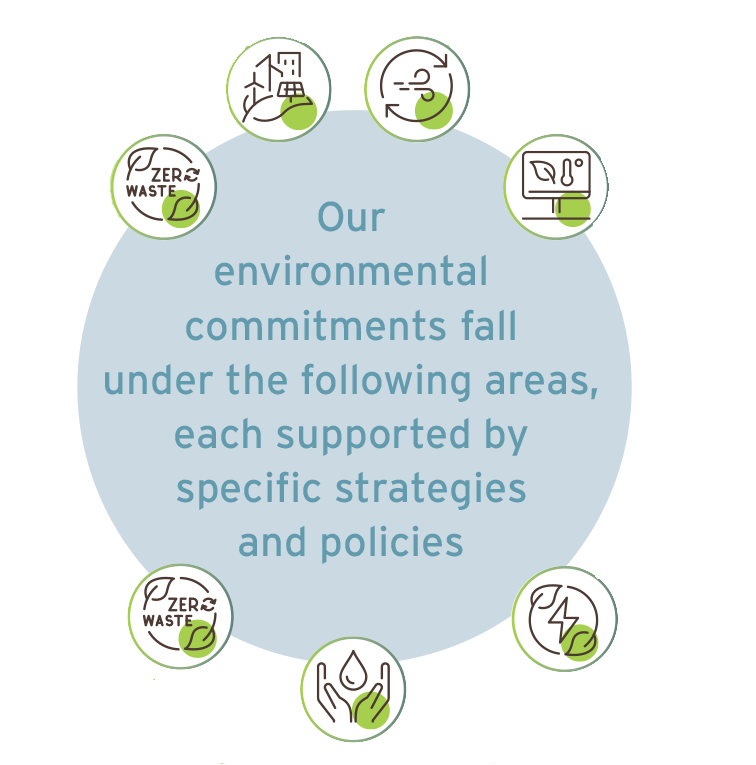
|
We are building our climate resilience by enhancing the adaptive capacity of Exxaro and communities and capitalising on strategic opportunities presented by the transition to a lower-carbon economy. |
|
|
Our cradle-to-cradle approach minimises waste production through recycling and reuse within a circular economy. |
|
|
Our water security plan is based on efficient water consumption, reuse and recycling to protect natural resources. |
|
|
Our energy and carbon management programme drives efficiencies that support a just transition to a low-carbon economy. |
|
| Air quality management is a top priority for operational sustainability, community safety and regulatory compliance. Pollutants such as dust and particulate matter (PM), including PM10 and PM2.5, emanate from opencast mining activities such as drilling, blasting, crushing, screening, transportation, materials handling, windswept storage piles and exposed areas. These activities unavoidably generate dust, and therefore pose health and safety risks. We are responsible to our employees and host communities to minimise and avoid this impact on air quality and the environment. |
Exxaro's air quality management approach aims to reduce our impact through:
|
We consistently enhance our mitigation measures to reduce the significant impacts on the environment and our host communities. These measures include:
To further mitigate dust fallout, in addition to traditional dust suppression methods, we plant trees as windbreaks at Belfast.
None of our BUs exceeded the number of allowable exceedances (two per year and non-sequential) for residential and non-residential dust limits. This is an indication that our fugitive dust mitigation measures are effective. We will continue monitoring and prioritising the mitigation of dust emissions.
We aim to intensify mitigation efforts through chemical suppression of dust on primary haul roads to increase dust suppression efficiencies in the third quarter of 2023. This is critical given that unpaved haul roads are significant contributors to fugitive dust in our operations.
| Climate adaptation, resilience and transition refer to our capacity to adjust to current and anticipated climate change-related risks, and capitalise on strategic opportunities presented by a low-carbon and resource-constrained economy. Two of Exxaro's strategic objectives - to transition at speed and scale and to be carbon neutral by 2050 - outline our goals and commitment to fundamentally change our business to positively respond to the climate change agenda. Our Climate Change Response strategy, TCFD recommendations, decarbonisation plan (under development for the medium and long-term targets) and linked STI scheme across the business support the achievement of these objectives. The principles and mechanisms to respond to climate change are integrated throughout our business and are central to our thinking and actions. |
We mitigate climate change and its impacts through:
|
 |
Climate Change Response strategy (2020 investor tab) | Climate change position statement (sustainability tab) | Transitioning into a low-carbon business (ESG report) | TCFD Index (refer to the databook) |
Decarbonisation plan (ESG report) |
CDP (www.cdp.net) |
![]() Responding to TCFD reporting requirements
Responding to TCFD reporting requirements
![]() Carbon intensity increased due to the ramp-up of operations at GG6, discussed in our operational performance . We expect an intensity reduction as we implement initiatives to support our STI scheme and our goal to be carbon neutral by 2050. Additionally, the grid emission factor increased from 1.06 to 1.08 affecting scope 2 and 3 emissions.
Carbon intensity increased due to the ramp-up of operations at GG6, discussed in our operational performance . We expect an intensity reduction as we implement initiatives to support our STI scheme and our goal to be carbon neutral by 2050. Additionally, the grid emission factor increased from 1.06 to 1.08 affecting scope 2 and 3 emissions.
Exxaro has several operational efficiency programmes that aim to reduce scope 1 and 2 (direct) emissions by 62ktCO2e by the end of 2026. These programmes focus on reducing diesel and electricity consumption. The solar PV project at Grootegeluk is designed to reduce emissions by 175ktCO2e upon commissioning and is envisaged to be implemented within the next two years. We also partner and collaborate with our value chain partners on reducing emissions associated with their operational activities and the value chain, share information on the impact and importance of climate change resilience for business and host communities. This is because scope 3 emissions are the main contributors to our profile. However, the impact of these initiatives cannot be quantified as savings in tCO2e.
![]() As our decarbonisation journey moved into implementation, we included climate change metrics in scorecards across the business and finalised our capital allocation model , supported by analytics tools that informed strategic decision-making. These tools enabled incremental steps towards emissions reductions against significant logistics constraints for our vehicle fleet at Grootegeluk. We addressed these constraints by implementing optimisation solutions that rectified higher carbon intensity per tonne of product mined due to sub-optimal equipment use.
As our decarbonisation journey moved into implementation, we included climate change metrics in scorecards across the business and finalised our capital allocation model , supported by analytics tools that informed strategic decision-making. These tools enabled incremental steps towards emissions reductions against significant logistics constraints for our vehicle fleet at Grootegeluk. We addressed these constraints by implementing optimisation solutions that rectified higher carbon intensity per tonne of product mined due to sub-optimal equipment use.
Our 2021 to 2025 pollution prevention plan, as required by the National Pollution Prevention Plan Regulations, includes GHG emissions reduction projects that aim to reduce diesel and electricity consumption and carbon emissions at our operations.
We are investing extensively in developing knowledge of climate change, renewable energy and sustainability. We prioritise innovation, research and development, and collaboration on sustainability issues with value chain stakeholders.
We remain cognisant of the changing regulatory landscape and continue to monitor related developments that may impact our business. We will continue contributing to Exxaro's goals to build a climate-resilient organisation - by reducing emissions, increasing the adaptive capacity of our operations and host communities and extending our influence throughout our value chain. We will progress our efforts to raise awareness, internally and externally, about climate change and the just energy transition to support South Africa's low-carbon transition.
Our primary focus areas in 2023 include climate adaptation (at our operations and host communities), using climate-related data to predict the impacts of extreme weather events on our operations, communities and social impact programmes. In addition, we will intensify energy efficiency and mitigation efforts at BUs. We are evaluating various opportunities to reduce emissions, including biofuels, compressed natural gas, electric vehicles, carbon and methane capture and storage, solar farms, green hydrogen and emissions offsets.
| We realise that efficient energy use is critical, particularly in South Africa where coal-based electricity supply is constrained and cost outpaces inflation. As such, we are committed to energy management that reduces GHG emissions to achieve our decarbonisation goals. We consider our value chain and support suppliers on our inclusive, sustainable and productive decarbonisation journey. |
To be carbon neutral, innovative and efficient energy management is crucial. As we prepare our business for the low-carbon economy, we must ensure that decarbonisation thinking is integrated into our operations with dedication to reducing direct (scope 1 and 2) GHG emissions across our BUs and value chain. To support these goals, we implement the ISO 50001 energy management system. |
Our primary energy sources were 40.7% electricity (2021: 40%) and 59% diesel (2021: 59%). Electricity and diesel intensity in total decreased in 2022. We submitted a 12L tax claim for one of the completed diesel energy intensity reduction projects executed at Grootegeluk.
Based on the decrease of 2.4% in RoM tonnages, electrical energy intensity increased by 3.9% and diesel energy intensity decreased by 7.0%.
Each BU has energy intensity targets linked to the STI scheme. The targets were based on the outcomes of current state and opportunity scoping reviews, which began at Grootegeluk in 2021. By year end, targets were in place at all operations.
The outcomes of the reviews also informed interventions that will reduce energy consumption and GHG emissions to improve intensity (GJ per total tonnes handled) at each site. Intensity performance is tracked monthly relative to the calculated energy intensity baseline. This baseline was calculated using the energy consumption and production data from the most recent preceding year that represented each mine's steady-state operation.
Energy-saving behaviour impacts the business and our wider operating environment. As such, our human resources, business improvement and information management teams drive behaviour change among employees by nurturing a culture of emissions reduction and accountability through communication, awareness training and engagement. Employees support efforts to establish energy management systems with engineering teams championing initiatives. Energy management champions motivate behaviour transformation and we discuss performance in monthly forums at each BU.
From 2023, we will focus on adopting proven technologies to reduce electrical energy intensity. To this end, we will implement impactful initiatives in our Grootegeluk and Mpumalanga process plant areas.
We will also begin decarbonising our mobile equipment fleet by working with original equipment manufacturers to align on their technology road maps, and trial and implement their technologies at pace and economical scale over the next five years.
| Water security is our capacity to safeguard sustainable access to sufficient, acceptable quality water. By proactively identifying risks and planning solutions, we sustain communities, protect the environment from water-related pollution and disasters, and stabilise crucial ecosystems. Water security management is a critical component of our overall operational and environmental management as we are sensitive to South Africa's water scarcity and the effects of climate change, particularly increased temperatures and rainfall variability. |
We manage water-related risks, minimise impacts and operate efficiently by:
|
We exceeded our overall water recycling target of 38% (defined as the total water recycled divided by total water used including recycled water).
Total water consumption (water withdrawals less water discharged) increased by 0.6% (normalised) and water intensity increased by 0.5% due to increased consumption at our Matla operation with the new box cut construction.
Our water intensity targets align with industry norms and site-specific conditions. The 180L/t RoM target is well below the coal industry average of 380L/t RoM.
Belfast's WUL was submitted to the Department of Water and Sanitation (DWS) for review and was granted in the fourth quarter of 2022. The renewal application for Matla's WUL was declined by DWS. However, an appeal was lodged with the Water Tribunal ensuring that the WUL is valid until a decision has been made. In the interim, Exxaro is engaging with DWS to find an acceptable resolution.
Our water management efficiency, mitigation, maintenance and conservation measures included:
High rainfall had a negative impact on mining conditions although this mitigated the short-term risk of water shortages.
While we continue our efforts to improve water efficiency through various infrastructure projects and enhancements, we will set an internal water price in 2023 to fully understand the actual cost of water versus the current cost to adequately address scarcity and quality concerns.
|
Mining activities create various waste streams. We are transforming our business into a circular mining economy so that the waste we produce is recycled and reused with sustainable benefits for host communities that depend on Exxaro for their livelihoods. By recycling and reusing the waste we produce, we uphold our licence to operate with a cradle-to-cradle approach that minimises waste production. Cradle-to-cradle waste management is a closed cycle: waste from one process is used in other processes to encourage elimination or minimisation of waste. |
Exxaro's evolving environment policy and management standard for hazardous and non-hazardous waste govern our approach. We ensure prevention, minimisation, reuse, recycling, energy recovery and safe waste disposal in compliance with the National Environmental Management: Waste Act, 2008 (Act 59 of 2008) and supporting legislation. Our management procedures include waste classification and efficiency reporting, as required by waste management licences, informed by sustainability KPIs aligned with ESG indices to drive continuous improvement. |
| Head office | Renewed contracts for recycling and general waste disposal at head office | |
| Grootegeluk | Completed the fire protection system installation in the temporary waste tyre storage area and stacked tyres as per the approved layout at Grootegeluk |
|
| Matla | Began appointing a new service provider (currently TL Ideas, an ESD beneficiary) to manage our waste recycling station at Matla | |
| Leeuwpan | Took ownership of the optimised sewage treatment plant at Leeuwpan | |
| Belfast | Appointed Phambili Services, an ESD beneficiary, to manage general and hazardous waste | |
General waste recycled decreased by 9% due to less ferrous and non-ferrous scrap produced at Grootegeluk.
The total weight of hazardous waste generated at our managed coal operations and sent to landfills in 2022 increased by 68% due to clean-up operations in May, June and August at Grootegeluk. This resulted in a 30% increase in the amount of hazardous waste taken away and disposed of in a registered landfill.
In its grievance register, Exxaro did not report any waste grievances, fines or penalties and did not receive any environmental fines and penalties related to non-compliance on waste management during the financial year.
Cennergi's operation and maintenance contractors are responsible for waste management at both wind energy facilities. Cennergi implements waste separation at source to increase recycling, where possible, and minimise waste sent to landfill. Cennergi did not report any waste grievance, fines and penalties during the year.
We will optimise our 2023 reporting to set targets that will enable us to divert 80% to 85% of recyclable waste from landfill sites by 2025. We plan to use alternative waste reduction or avoidance technologies and opportunities to procure equipment that supports our commitment to the circular economy concept.
At Grootegeluk, we will continue the successful waste tyre reclamation project with a new service provider, establish partnerships with other NGOs and seek access to additional project funding.
As advised by FTSE Russell, we will include additional KPIs in our reporting.
Our new waste management policy will be approved and published in 2023. The policy outlines waste reporting, management and mitigation. Detailed procedures and KPIs will ensure we honour our commitments. The dashboard that tracks waste volumes generated, recycled and sent to registered landfills will include KPIs such as total costs of environmental fines and penalties, as recommended by FTSE Russell. This will enable us to improve our disclosure.
Assessments across our operations determined the scope of work needed to achieve these targets. Data collected on recyclable materials from the waste stream assessments will optimise our 2023 reporting.
| Conservation is a priority for Exxaro to avoid biodiversity loss for the sake of wildlife, economic activities and people who depend on the natural resources impacted by our mining activities. We therefore assess our potential impacts before we mine, and conduct biomonitoring and environmental incident reporting. Communities benefit from employment created by contractors who will eventually hand over invasive plant control contracts to local community members. We strive to be a low-impact, bio-regenerative organisation for current and future generations. |
Our holistic approach to biodiversity management combines:
|
We experienced minor challenges such as restricted access to privately owned land within our mining right area for the removal of invasive alien plants and delays in permit approval by authorities for species relocation from the mining area into conservation land at Belfast. We therefore cleared 58% less invasive alien vegetation compared to the previous year.
Relocation and conservation programmes
|
Waterberg (Limpopo) |
Mpumalanga | |
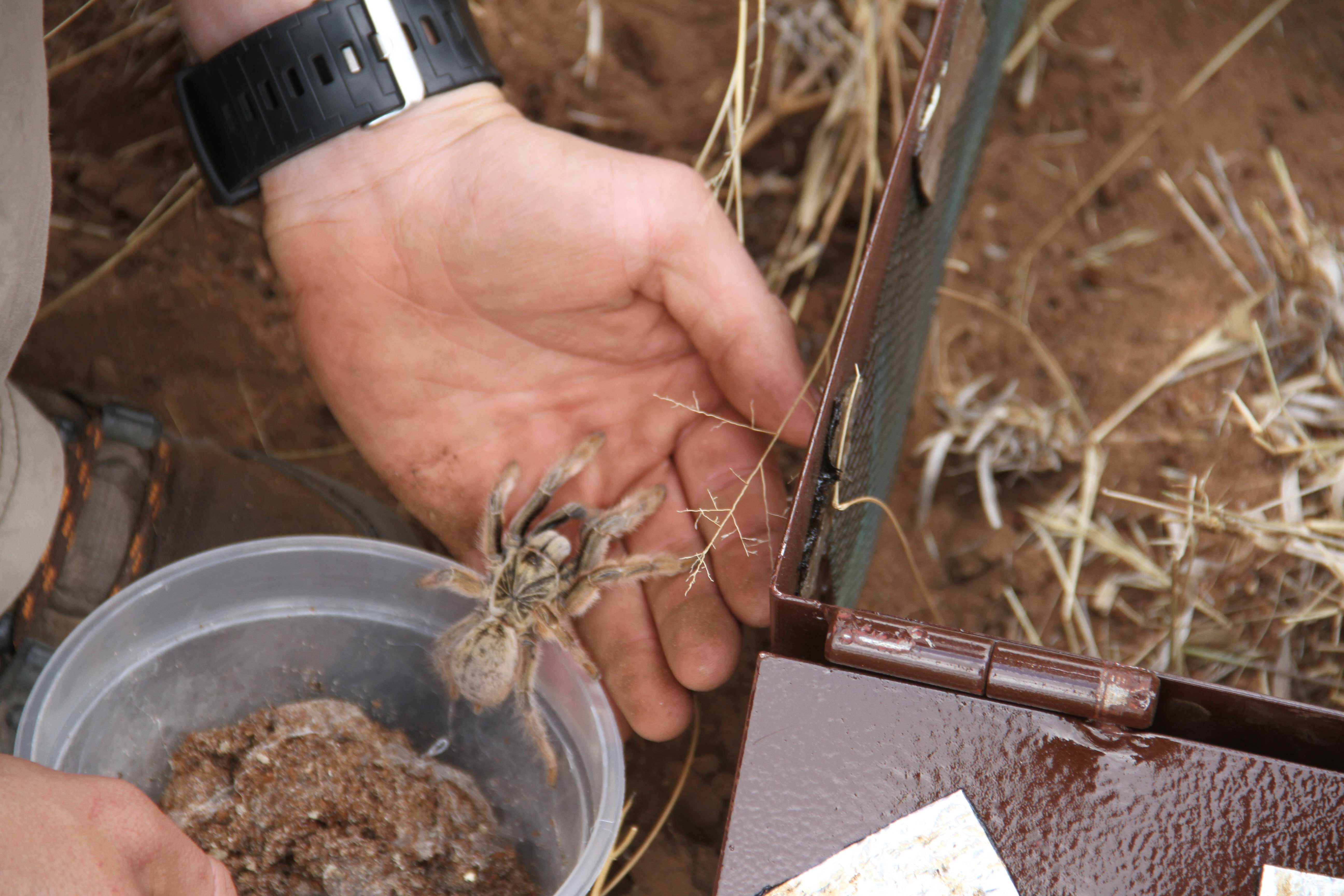
Grootegeluk and Belfast: Baboon spider and succulent relocation Our team works closely with authorities in relocating baboon spiders and protected succulent species as our mining footprint expands. |
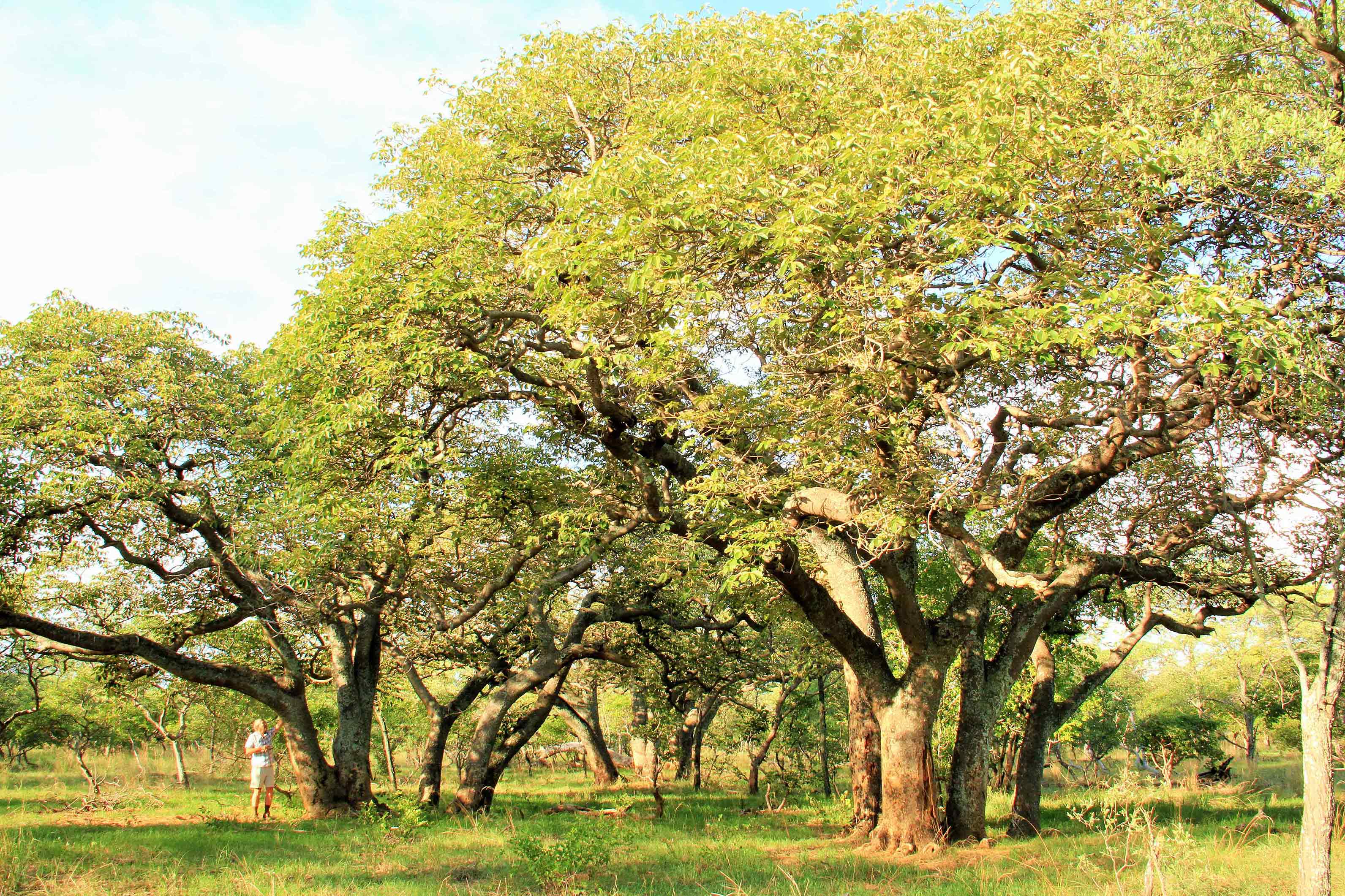
Grootegeluk: Conservation in Manketti Game Reserve The 22 000ha Manketti Game Reserve continues to optimise land use and the sustainability of Grootegeluk. |
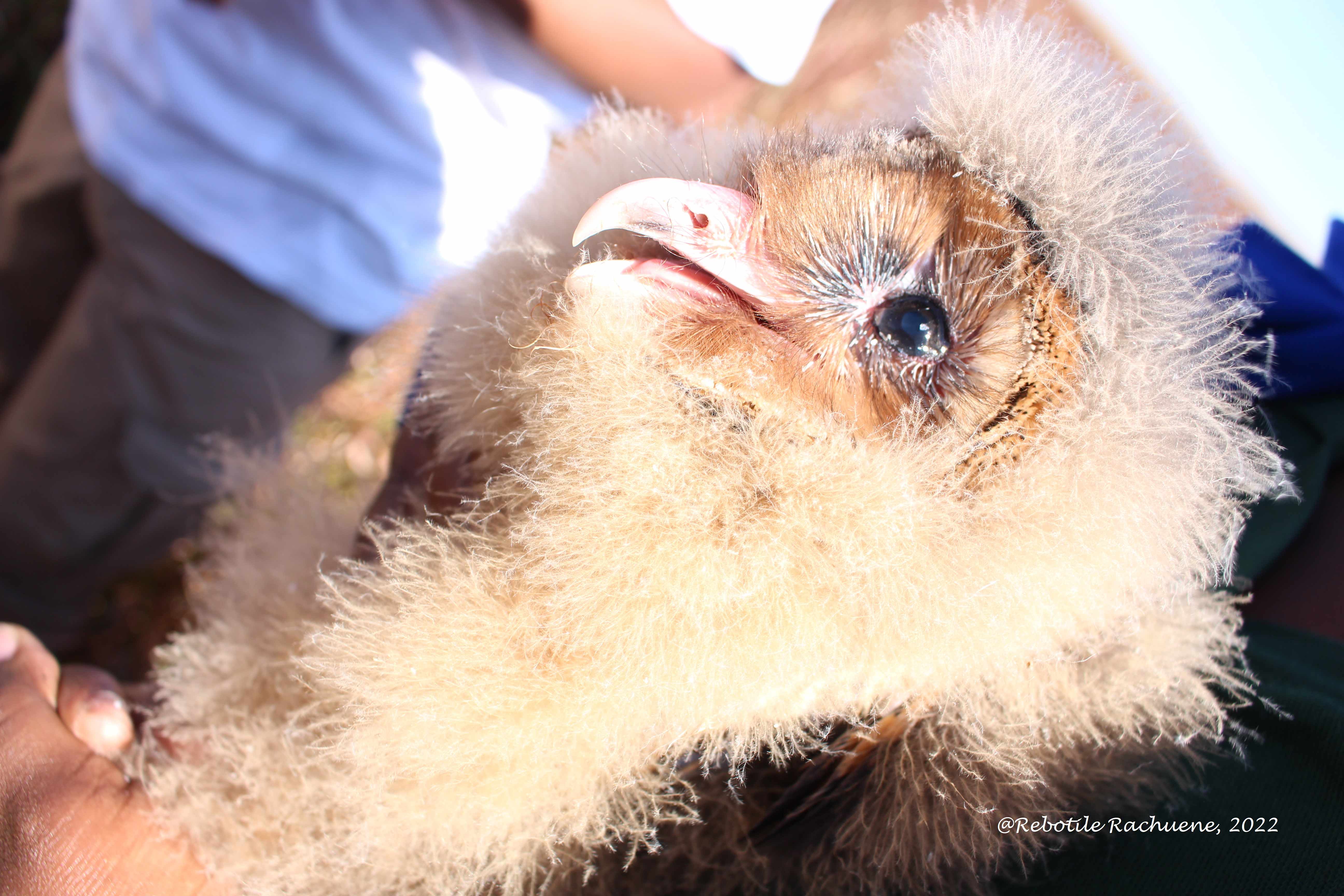
Matla and Belfast: African grass owl and bat protection Exxaro has partnered with the Endangered Wildlife Trust to develop a monitoring programme that could enhance our existing processes. Within the Belfast conservation area, we also assist the Birds of Prey NGO with the safe and controlled release of grass owls and bats. |
| Eastern Cape | ||
 | ||
|
Cennergi employs local carcass search companies to monitor bird and bat fatalities in accordance with the South African bird and wind energy facilities guidelines. At Amakhala Emoyeni, a bat fatality curtailment programme will be implemented between October 2022 and May 2023 to reduce fatalities. The avifauna specialists prepare the semi-annual bird and bat monitoring reports submitted to lenders, BirdLife Africa, Endangered Wildlife Trust, the DFFE and other relevant authorities. No red data mortalities were recorded at Tsitsikamma in 2022. Unfortunately, one secretary bird fatality was recorded at Amakhala Emoyeni. |
Amakhala Emoyeni: Cape vulture management Cennergi supports the Endangered Wildlife Trust's Eastern Cape vulture safe zone research. This programme aims to reduce Cape vulture fatalities at operating and proposed wind energy facilities. It also stabilises the local population by addressing threats in the safe zone. It is the first habitat safe for vultures within wind energy facilities and the surrounding landscape. |
|
Across our sites, we progressed in avoiding:
Invasive alien plant control continues at BUs and will start at Grootegeluk in 2023. The tender process to appoint a service provider began in the third quarter of 2022.
Since 2016, full-time local SMMEs have successfully managed Cennergi's alien plant control programme
Following an assessment of pans at Belfast by the Council for Scientific and Industrial Research in 2019, and subsequent monitoring by Exxaro since 2020 to avoid deprivation, an external reviewer conducts monthly and quarterly evaluations. We are evaluating recommendations from our completed pan research project to determine the next steps.
We did not record any biodiversity-related grievances in 2022.
Exxaro intends to introduce detailed regional biodiversity management plans, based on our impact assessments in 2022. Plans will ensure compliance, and inform targets and KPIs being developed for each BU.
| Understanding that responsible mining practices continuously evolve, we have a holistic and integrated approach to mine closure, taking into account environmental protection, social wellbeing and financial performance. Mine rehabilitation is the restoration of the post-mined landscape to the intended post-mining land use. We see environmental rehabilitation as an opportunity to uplift our employees and communities with sustainable alternative land use. |
We manage our environmental liabilities and rehabilitation in compliance with legislation and evolving responsible mining practices. Our licence to operate depends on a holistic and integrated approach to land management, mine closure and concurrent rehabilitation. Our approach therefore considers impacts on employees, communities, the environment, government and infrastructure. Further, our proactive management of environmental impacts minimises residual liabilities (water quality and quantity, and topsoil health), that could affect Exxaro's financial performance by completing concurrent rehabilitation timeously and to prevent water ingress into rehabilitated areas. |
Operations in active closure in 2022: Tshikondeni, Durnacol, Hlobane and Strathrae (2021: four)
Available land for emerging farmers and communities
We are working towards transferring 90% of post-mining land to emerging farmers in local communities by 2026.
We will align our mine closure and rehabilitation approach with the Sustainable Growth and Impact strategy in 2023.
Our strategic objectives include:
 Report Index
Report Index